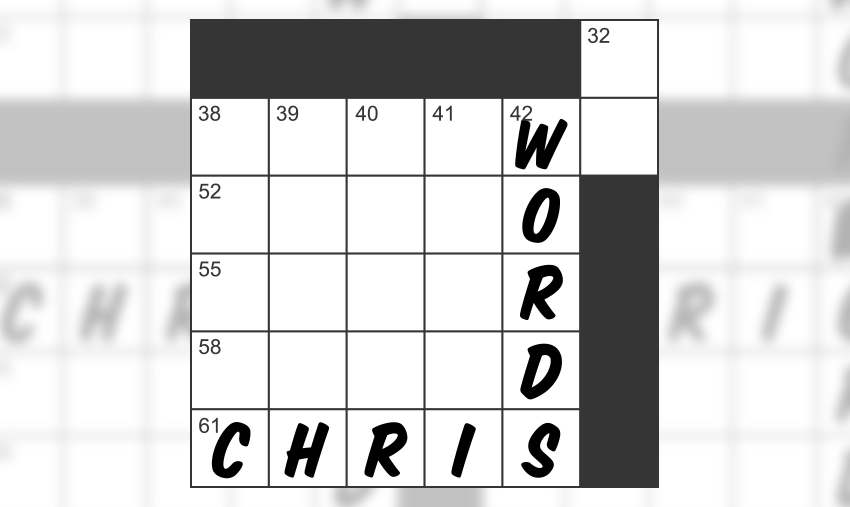Able Was I Ere I Solved Crosswords
Investigating the biggest palindrome cities, and other curiosities

Happy last weekend in January! I still want to tell folks Happy New Year, but we’re almost in February. You know what is new, though? The many puzzles that are published every week! So let’s start solving.
Clues you can use
Friday, Jan. 26 (Universal Crossword, constructed by Norman M. Aaronson)
“Mudbound” director Dee ___ = REES
Born in Nashville in 1977, Dee Rees became the first Black woman nominated for the Best Adapted Screenplay Oscar, for her 2017 film Mudbound. The movie follows two World War II veterans returning to Mississippi, and reckoning with the race issues of the time. The film also stars Mary J. Blige, who was nominated for both Best Supporting Actress and Best Original Song. Previously, Rees had directed the 2011 film Pariah and the 2015 HBO biopic Bessie. Recently, she directed a few episodes of the AppleTV+ series Masters of the Air. “There’s a lot of power,” Rees once told IndieWire, “in saying no to big things that you don’t want to do, in order to say yes to the kind of things that really inspire you.” Words to live by!
Thursday, Jan. 25 (Vox crossword, constructed by Will Nediger)
Palindromic university in Quebec = LAVAL
The city of Laval is Montreal’s largest suburb, and the third largest city in the province. But the university is in Quebec City, and is the alma mater of Canadian prime ministers Brian Mulroney and Jean Chrétien. But back to the suburb: Home to 450,000 Quebecois, Laval might be the biggest palindrome city in the world. Upon investigating, there are only a few more cities that have ever been featured in a crossword puzzle because they are palindromes:
- ORURO, Bolivia (345,000)
- EDE, Nigeria (160,000) and EDE, Netherlands (120,000)
- HAJJAH, Yemen (53,000)
- ADA, Oklahoma (16,000)
- AVA, Missouri (2,800)
As far as I can tell, these are the only palindrome cities to ever be called out in a crossword. While there are more palindromes out there–including Wassamassaw, South Carolina–they’ve yet to make it into a puzzle. Make it happen, constructors!
Wednesday, Jan. 24 (New York Times Mini, constructed by Joel Fagliano)
Dwarf planet that’s only about half the width of the United States = PLUTO
This is our first clue from a New York Times mini puzzle, and it feels appropriate that it’s about such a wee space rock (a rock whose size was also hotly debated at this month’s MIT Mystery Hunt). The truth is, Pluto is not big. According to NASA, it’s 1,430 miles in diameter–which is, sure enough, 56 percent of the distance between Portland, Oregon and Portland, Maine. Over the nearly-a-century since its discovery, Pluto has gotten smaller in a sense: In 1950, it was reckoned to be 6,500 miles across, or just a little smaller than Earth. Today, Pluto is much smaller than the Earth’s moon, as well as six other moons in our solar system; and of course, it hasn’t been a planet since 2006.
Puzzle love
A few discussions of crosswords this week:
Our first comes from a column in The Guardian about whether crosswords are actually good for the brain. The short answer is probably, as is any mentally-challenging activity. Trivia is on that list too, as I’m sure you’re keenly aware.
Meanwhile, an article in The Tide–the official student newspaper of Richard Montgomery High School in Rockville, Maryland–highlights an English teacher who brings puzzles into the classroom. That teacher is in fact crossword guy and voracious reader Jeremy Koenig, whom I’ve known for a while and have met at several tournaments. Glad to see his students highlighting his crossword passion!
Lastly, it’s still hard to believe that the MIT Mystery Hunt was a couple of weekends ago. I’m still planning to highlight some puzzles from the Hunt on this website, but I’m waiting for the permanent links. Stay tuned–and in the meantime, have a great week!
Chris King is a longtime crossword commentator, and the author of five published puzzle books. His column appears on Questionist every Sunday.
